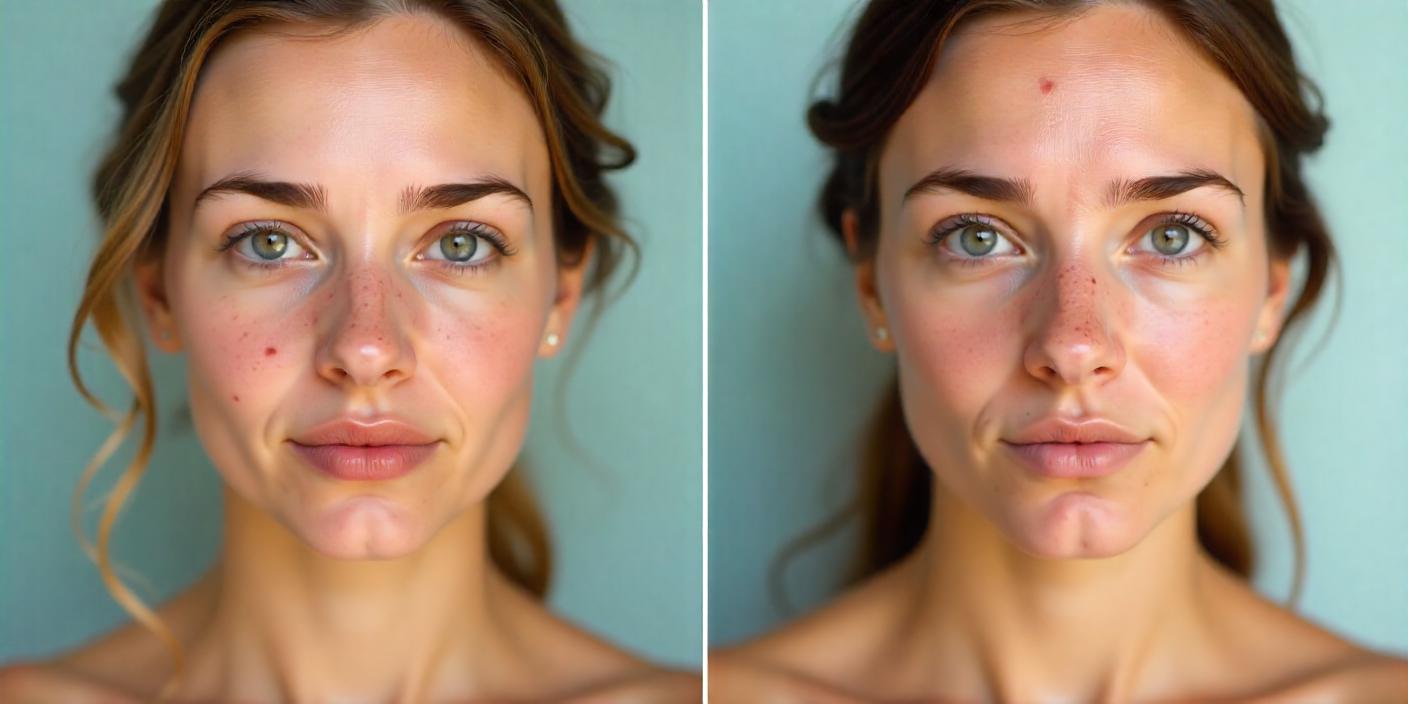
What is the most Common Skin Disease?
Our skin has plenty to cope with. Between sun exposure, pollution and hormones gone wild, it is not surprising that the skin issues of millions persist year after year. However, among all these problems, have you ever considered asking what the most common skin disease is? You’re not alone.
Whether you’re someone who sometimes confronts a rash or a patch of acne, or someone just curious about why and how our skin responds to the world, this article is your guide. We’ll discuss the most common skin disease, what causes it, when and how it appears on the skin at different ages, how to treat it, and, most importantly, how to avoid it.
The king- Acne vulgaris:
When we’re talking about the most common skin disease, the unequivocal answer is: Acne vulgaris. Doesn’t matter where you live or how old you are, acne is a universal visitor. While it’s most commonly associated with teenagers, it can strike at any age, which is why it’s one of the most maddening and persistent common skin conditions out there. Acne Symptoms And Stages / What You Need to Know About Acne Let’s dissect how acne forms, because it doesn’t just appear out of nowhere. Comedonal Stage (Mild)Blackheads and whiteheads start appearing.
Mud and dead skin trap sebum in the skin’s pores.
2. Inflammatory Stage (Moderate): Pimples, redness, and swelling form.
Bacteria (in this case, Propionibacterium acnes) inflame the clogs.
3. Nodulocystic Stage (Severe)
Painful cysts and nodules can form beneath the skin.
Scaring is common if not treated.
These stages indicate that there are symptoms of skin disease in various degrees of severity. That’s why acne is still the number one common skin disease worldwide, regardless of geography.
Why Acne Is So Common? So why is acne the king of all skin diseases? The reason can be found in its triggers. It’s not one cause, it’s many. And that’s why it’s so hard to duck. Common Causes of Skin Problems (Mainly ACNE ):
Hormonal changes (particularly through puberty, menstruation, and pregnancy)
Bad skincare routine or comedogenic products
Stress: This ramps up the production of cortisol and oil
Diet, especially dairy and a high-glycemic index diet
Environmental pollution
With so many possible triggers, it’s no wonder that acne has earned the top spot as the most common skin disease.
Skin Disorders in Adults: Acne Isn’t Just for Teens
It is a misconception that acne disappears with adolescence, but the catch is this: skin diseases in adults are more prevalent than you would have imagined. Adult acne occurs in women more often as a result of hormonal menstrual cycles.
Indeed, “adult acne” has become a distinct disease category in dermatology in current times under the various forms of skin diseases. It tends to show up on the jawline, chin, and cheeks, is deeper and painful than teenage acne, and is quite likely to leave a scar.
And yes, that still fits in the category of the #1 most common skin disease.
How Acne Affects Different Age Groups?
Let’s discuss skin conditions by age:
Understanding how acne works. Let’s explore how acne behaves by understanding the type of acne in adults: Causes. According to the American Academy of Dermatology, the factors that contribute to adult acne include: Hormonal changes. The four most common hormones, an increased amount of which can cause acne, are:
Testosterone, Estrogen, DHEA (dehydroepiandrosterone), DHT (dihydrotestosterone). These hormones can cause excess oil production (“oil” is also known as sebum ).
Teens:
Predominantly inflammatory acne with pustules and papules
The hormones are raging
Adults (20s to 40s):
Acne is triggered by hormones and stress
May become chronic and more difficult to treat
Seniors:
Less likely, but it is possible
Frequently misdiagnosed as rosacea or other skin conditions
It’s no secret that the age of acne comes calling and does so on a wide spectrum of the population.
Is Acne Infectious? Nope! Acne is often misunderstood. A lot of people think it spreads by contact, but contact is one of those typical examples of a non-contagious skin condition.” It’s not like those are caused by external viruses or bacteria. But if you scratch or pop pimples, you invite bacteria and infections. That is why the nature of the types of skin diseases does matter very much.
Treatment of common skin conditions, including acne
Now that we know it’s the most prevalent of all common skin diseases, what are we supposed to do about it?
Some treatments are:
Benzoyl peroxide
Salicylic acid
Retinoids
Prescription Treatments:
Oral antibiotics
Treatments affecting hormones (such as birth control pills or spironolactone)
Isotretinoin (for very severe cases)
All of these are categorised under the treatment of common skin diseases and can be customised for your skin type and level of severity.
Dermatological Disorders: Your Everyday Acne
Let’s get real for a moment. Acne is too often dismissed as a cosmetic problem. But dermatologists say that it should be classified with other more serious dermatological disorders because of its emotional and psychological impact. The effects are wide-ranging: from low self-esteem to anxiety and even depression. This makes treating the most common skin disease not only about clear skin, but also about mental well-being. How To Avoid Skin Diseases Such As Acne? So, how can you put an end to acne before it starts? Here is some science-driven advice on how to not get this skin disease, acne:
~Wash face twice a day with a small amount of mild, non-drying cleanser
~Ignoring to use moisturiser, even if your face is greasy
~Change pillowcases regularly
~Avoid touching your face
~Apply sunscreen (non-comedogenic, obviously)
~Walks your diet — no dairy and no sugar.
~Control stress with exercise or mindfulness
Other Common Skin Conditions Besides Acne
While acne is the most common skin condition, it’s far from the only one. Here’s a quick shout-out to a few other common skin conditions you’ll also want to know:
Eczema (Atopic Dermatitis): Many different types of skin rashes exist.
Psoriasis: An Autoimmune condition that causes scaly patches
Crossing rosacea: Flushing and visible blood vessels.
Tinea (Ringworm): A fungal disease.
These are broadly under the category of skin diseases, but are not as prevalent worldwide as acne is.
Final Thoughts
There you have it. The answer to the question “The most common skin disease?” is louder and clearer: “acne vulgaris.” From young to seniors, among both women and men, in all ethnic groups, acne is still the most common skin condition.
Let’s not pretend that acne is a stage to power through. With the proper information, consistency, and care, it’s completely manageable.
FAQs
1. Is the skin disorder known as acne the most prevalent skin disease?
Yes. Epidemiological reports from around the world indicate that acne vulgaris is the most frequent skin disease, with a prevalence of up to 85% among individuals during their lifetime.
2. What are the primary culprits behind acne?
Acne results from pores plugged by oily secretions, hormonal shifts, germs and inflammation. They are the most common contributors to skin issues around the world.
3. Why is adult acne different from adolescent acne?
‘Adult acne tends to be deeper and more cystic. It is more common in women and presents on the lower part of the face, so it is a popular adult skin issue.
4. Is there a cure for acne?
There’s no one-size-fits-all solution, but with treatment for regular skin issues and a proper skincare routine, having pimples should become a thing of the past.
5. Can I prevent acne naturally?
Yes, lifestyle changes like reducing sugar intake, managing stress, and using non-comedogenic skincare can help in preventing skin diseases like acne.
